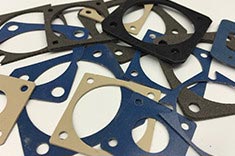EMI Shielding Products
- Custom Gasket Fabrication
- Connector Gaskets
- Bonded O Ring
- Custom Gaskets
- Conduct-O-Knit Knitted Wire Mesh
- Conduct-O-Seal Combo Gasket
- Conduct-O-Elastomer
- Conduct-O-Seal Oriented Wire in Silicone Gasket Material
- Conduct-O-Mesh Tape
- Conduct-O-Foam
- Conduct-O-Bond
- Optical Filters For Electronic Displays
- Shielded Vent Panels
- ESC Board Level Shielding
- 300 Series
What is the Difference Between EMI and RFI
Both radio frequency (RFI) and electromagnetic interference (EMI) are created by and affect electronic devices. It is common to find individuals using the two terms interchangeably. This is a result of radio waves being a subset of the electromagnetic spectrum. It is important to keep in mind that although EMI and RFI are similar, they are not the same. EMI typically refers to short-range interference resulting from high-frequency emissions that come from the device itself. RFI is known to have longer wavelength interference from an external source. RFI and EMI both affect devices differently, but they are a common issue for electronics.

Conductive materials are used to attenuate and reduce electromagnetic waves. Both EMI shielding and RFI shielding contain a layer of conductive material. They are used to protect devices from the environment and other components within the devices. Conductive paints are also used to provide even stronger solutions.
Modern enclosures are often made from plastic, which offers no intrinsic protection. Plastic is coated with conductive paint to make up for these flaws. A board component is shielded with metal caps.
EMI RFI Shielding
Shielding is a great option to ensure that devices run properly. EMI and RFI negatively affect how electronic devices function, and in some cases, they can cause devices to stop working completely. For more information on designing EMI shields and RFI shields, you should not hesitate to give our talented team a call.
Related Reading about EMI Shielding
- Choosing Between Molding and SplicingEMI shielding and RFI shielding gaskets come in two main types: molded gaskets and spliced gaskets. Both styles come in a wide, almost endless range of shapes, sizes, and materials.
- How Does EMI Shielding Work?
- Preventing Interference with RFI Shields and RFI Filters



